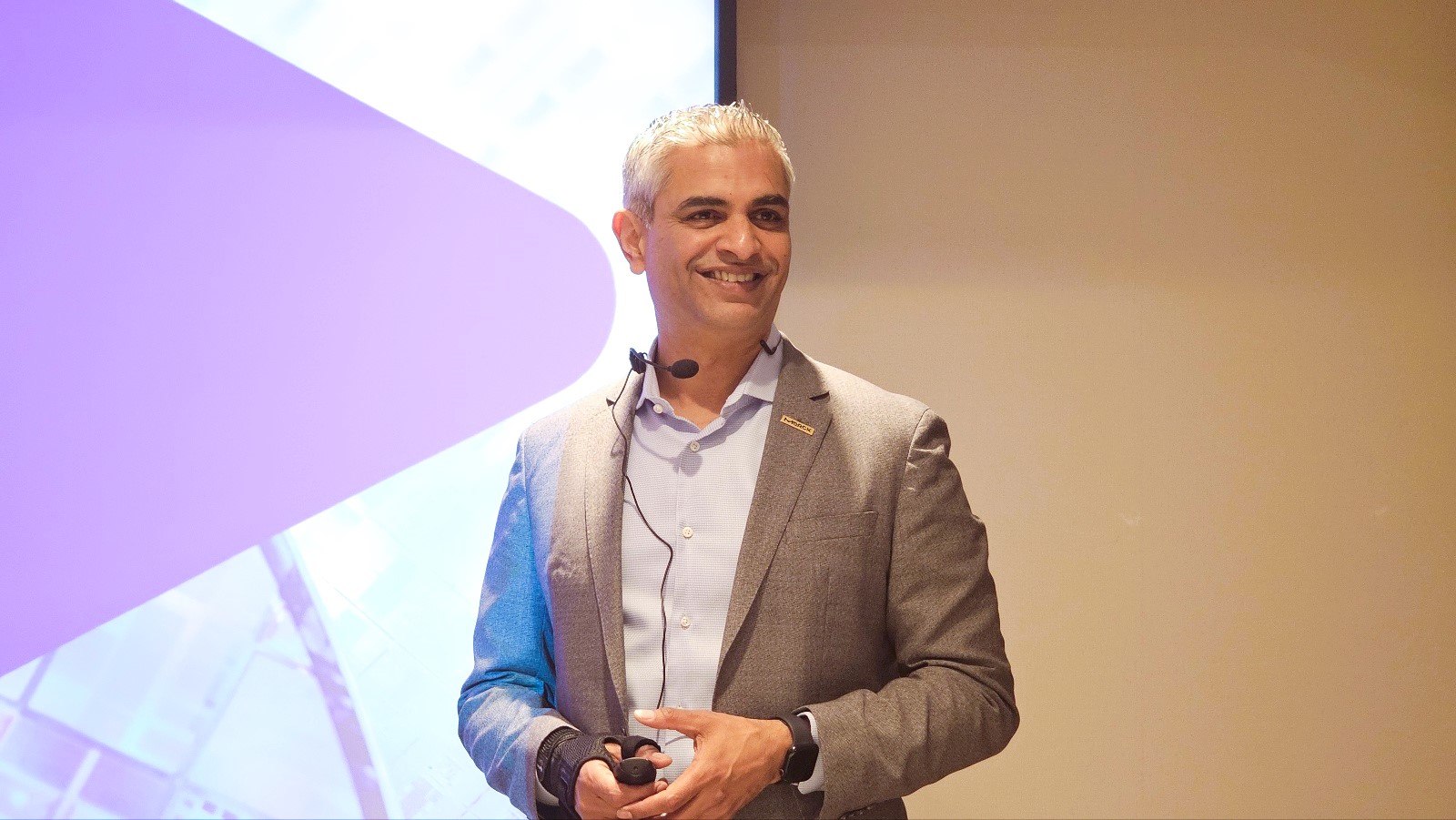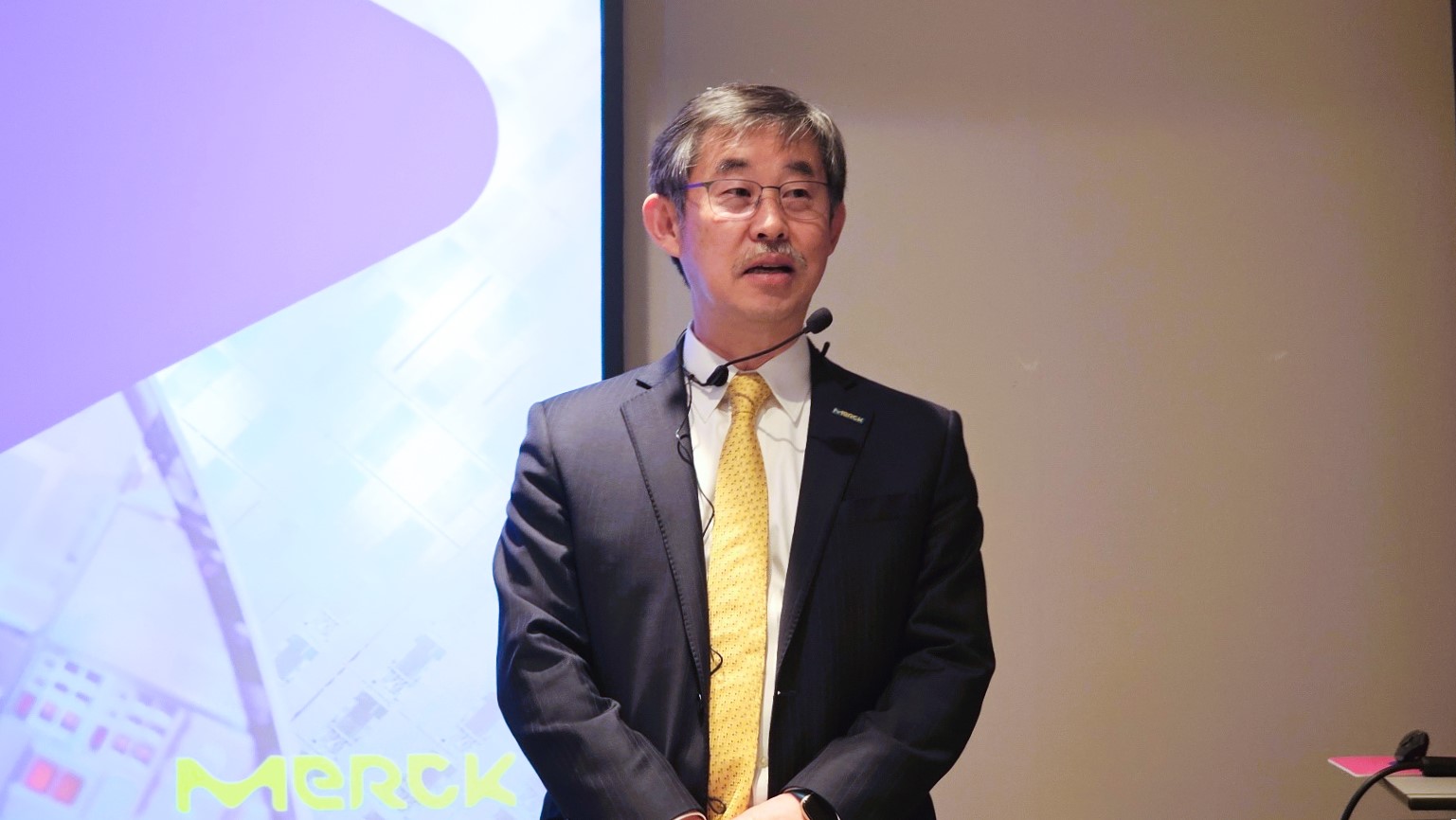머크(Merck)가 20일 서울 삼성동에서 기자간담회를 개최하고, 세미콘 코리아 2025에서 머크의 머티리얼즈 인텔리전스 플랫폼을 통한 AI 기반 소재 솔루션과 디지털화 역량을 선보인다고 밝혔다. 기자간담회에서 아난드 남비아 머크 일렉트로닉스 비즈니스 수석부사장 겸 CCO는 반도체 소재 혁신이 메모리 월(Memory Wall)을 극복할 수 있는 핵심 요소가 될 것이라며, 로직-메모리 간 성능 발전 격차인 메모리 월이 점차 증가해 20년간 600배 격차로 벌어진 것으로 나타나 메모리 혁신을 위한 신소재 혁신이 요구되고 있다고 밝혔다.

▲아난드 남비아 머크 일렉트로닉스 비즈니스 수석부사장 겸 CCO
머크 소재 인텔리전스 플랫폼 기반 칩 아키텍처
아난드 남비아 CCO, “메모리 월 20년간 600배↑”
반도체 소재 혁신이 메모리 월(Memory Wall)을 극복할 수 있는 핵심 요소가 될 것으로 전망되고 있다. 로직-메모리 간 성능 발전 격차인 메모리 월이 점차 증가해 20년간 600배 격차로 벌어진 것으로 나타나 메모리 혁신을 위한 신소재 혁신이 요구되고 있다.
머크가 20일 서울 삼성동에서 기자간담회를 개최해 세미콘 코리아 2025에서 머크의 머티리얼즈 인텔리전스 플랫폼을 통한 AI 기반 소재 솔루션과 디지털화 역량을 선보인다고 밝혔다.
아난드 남비아 머크 일렉트로닉스 비즈니스 수석부사장 겸 CCO가 참석해 ‘머티리얼즈 인텔리전스 플랫폼 기반 기술 혁신’을 주제로 발표를 진행했다.
아난드 CCO는 “세미콘2025 기조연설에서 많은 연사들이 공통되게 말한 것이 신소재의 필요성이다”라면서, “소재 혁신은 더 나은 성능과 낮은 전력 소비를 핵심으로 발전하고 있다”고 설명했다.
머크의 독보적인 시장 지위는 반도체 전공정 프로세스에 전반적으로 관여하고 있다는 사실이며, 반도체 제조사는 예측 가능하고 검증된 솔루션을 기대한다. 특히 전공정의 장비, 개념이 후공정으로까지 전파되며 칩렛과 같은 첨단 패키징 시대에는 전체 과정 솔루션과 역량이 대두되고 있는 상황이다.
이에 머크는 전반적인 공정 스텝을 모두 지원하며 첨단 패키징에 혁신과 반도체 스케일링 발전을 지원한다고 강조했다. △2D 스케일링 미세화 △3D 아키텍처 △이종 집적 패키징 등 3대 반도체 챌린지 극복에 역량을 제공한다.
아난드 CCO는 “반도체 전공정이 2나노 공정에서 2,000여 스탭에 이르며 특히 다양한 기능의 반도체가 집적되는 이종접합 칩렛에서 수율 문제가 핵심으로 부각되고 있다”면서, “고객사는 종합 솔루션을 기대하며 머크는 전공정-후공정 간 밀접화되는 추세를 반영해 모든 업체와 협업하며 단계들을 지원하고 있다”고 밝혔다.
특히 AI 시대의 머크는 ‘머티리얼즈 인텔리전스’를 강조하며 AI 세계와 물리세계를 연결을 통해 소재 제조공정에서 산출 제품의 상황을 이해하는 데 도움이 된다고 전했다. AI 시뮬레이션은 수백, 수천 건의 아이디어를 찾아낼 수도 있으며, 가상 실험을 통해 개선 과정의 시간을 크게 단축할 수 있다고 설명했다.
아난드 CCO는 “업계 큰 도전과제는 메모리 월로 CPU와 메모리 발전 격차가 크게 벌어지고 있다”면서, 로직-메모리 간 발전 격차를 나타내는 메모리 월은 600배 가까이 격차가 벌어졌다고 강조했다. 이러한 도전 과제 해결이 AI 시대에 신소재에서 기대되고 있다

▲김우규 한국머크 대표
김우규 한국머크 대표는 “머크는 한국을 우리의 필수 소재 R&D 및 생산을 위한 글로벌 핵심 허브 중 하나로 생각한다”면서, “작년 하반기 안성에 개관한 한국 SOD 어플리케이션센터와 음성 사업장의 신제품 라인에 대한 지속적인 투자 등 지난 36년 동안 한국고객사의 미래 성장을 지원하는 혁신 파트너로서 최선을 다하고 있다”고 말했다.
또한 김 대표는 “머크는 더 빠르고 신속한 지원 및 서비스를 위해 현지 역량과 역량 강화를 위한 투자 약속을 계속 성실히 이행할 것”이라고 덧붙였다.

